It’s Autistic Pride Day today, a day that, Wikipedia tells us, is “is a celebration of the neurodiversity of people on the autism spectrum.” I know this because Oliver, who’s the person in our family who’s on top of what-day-is-what, told me so.
My favourite explanation of what this day might mean comes from the Autistic Self Advocacy Network and its poster “Why Acceptance?” that reads, in part:
What is autism acceptance? Autism acceptance means embracing and valuing autistic people as autistic people instead of being afraid of us, having low expectations, or trying to find a way to make us not autistic.
and then continues:
Acceptance is not passive. Acceptance is an action. Acceptance means doing everything you can so that your autistic child will grow up into the best autistic adult they can be, supporting your autistic friends in a world that is not designed for us, and working to make our world a better, more inclusive, safer place for autistic people of all ages and abilities.
It is, in other words, not a day for me to mark how proud I am of my autistic son (although I am enormously proud, every day, of the man he is becoming), it is a day for us all to celebrate the pride that Oliver takes in being who Oliver is.
If I could snap my fingers and change the world, I wouldn’t change a single thing about Oliver: he is a funny, creative, perceptive, compassionate, person who I love dearly.
My job, as his father, is to ensure, to the extent that I can, that the world – the world that is, in many ways, not designed for him – greets Oliver on his terms.
We were in Nova Scotia for a long weekend, and on the spur of the moment Sunday decided to drive up the Valley toward Wolfville, an area of the province we hadn’t been to, as a family, in more than 15 years ago.
When we saw the sign on the highway pointing to “Coffee Museum” at the Grand Pré exit, I quickly signaled to exit, and 10 seconds later we were pulling into the driveway of the Just Us! café, retail store, roastery and coffee/fair trade museum. It’s an impressive operation and the museum in particular is of note for it covers not only the world of coffee, but the worlds of fair trade coffee and of cooperative enterprises (like Just Us!). Plus, they make an excellent cup of coffee.
As we’d left the highway anyway, I cast about for other things to see and do in Grand Pré, and the nearby National Historic Site because our next destination.
This too is an impressive destination: a well-done film and exhibit on the history of the expulsion of the Acadians all set in one of the most scenic areas of the country I’ve ever come across. Here’s a picture I casually snapped with my phone while walked back from the blacksmith shop on the edge of the site, looking over the rich farmland of the area, all reclaimed from the sea by Acadians more than 250 years ago:

We finished up the visit to the Valley with a jaunt into Wolfville for lunch at The Library Pub and a shop next door at The Box of Delights. Save for a brief oh-my-we’re-almost-out-of-gasoline panic on the other side of Windsor, it was an entirely pleasant day, and we’ve lots of reasons to go back before another 15 years passes.
This week I had occasion to learn about pin marks, courtesy of Ed from Swamp Press, who replied to a query I’d sent him asking “what about the pin marks?”
Which prompted me to wonder “hmmm, what does he mean by pin marks?”
So I set out to learn, ending up at Identifying Metal Type: Pin Marks, an excellent resource that says, in part:
A “pin mark” is a distinctive, usually circular, depression which appears on the side of some (but not all) metal printing types. It may be relatively simple … or quite elaborate … It is only one of many features which may assist in the identification of type.
My question for Ed was prompted by a careful reader of my Twitter feed noting that, in this proof of a poster for Grownups Read Things They Wrote as Kids, the U in “GUILD” appeared out of sorts.
And it was (I’d used a U of the wrong weight for that letter).
Which further prompted me to look more carefully at all the type and realize that the “S” in “AS” appeared out of sorts as well.
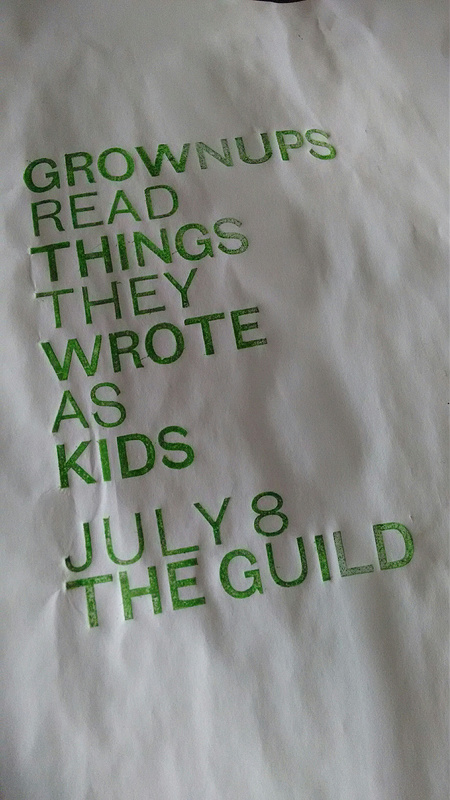
A closer examination of this “S” (on the right in the photo below) compared to other “S” (on the left in the photo) in the drawer revealed the, indeed, although they were all on a 36 point body, the one I’d pulled out was of a slightly larger size:

I sent a query to Ed – who knows more about metal type than I will ever know – and he asked, as indicated earlier, “what about the pin marks?”
So what about the pin marks!
Here’s a close-up of the pin marks on a “regular S” (left) and on an “oversize S” (right). What I learn from these is that the letter on the left was cast by Caslon, whereas the one on the right was cast by Stephenson, Blake. Both are marked “36,” for 36 point. Among other things this tells me that company that cast each, that it’s European type (as Caslon and Stephenson, Blake were both UK companies; indeed Stephenson, Blake acquired Caslon in the 1930s) and, generally, that it’s “foundry type,” as opposed to type cast on a Monotype casting machine.
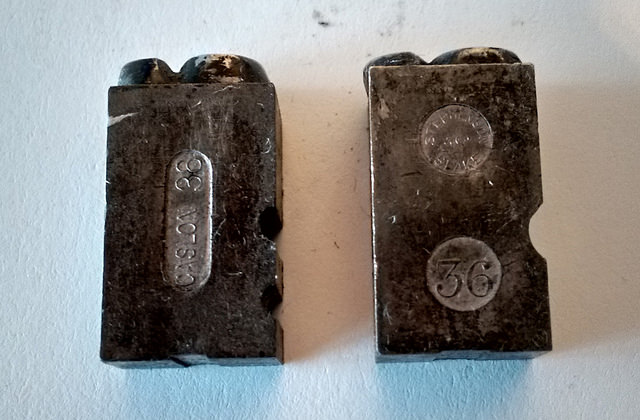
The shocking thing is that this type has been in my midst – less than a metre from where I type, in fact – for two years, and it’s only now that I’ve come to learn that this helpful information is imprinted on every letter.
So much to learn!
Here’s the finished print, with both the U and the S corrected:
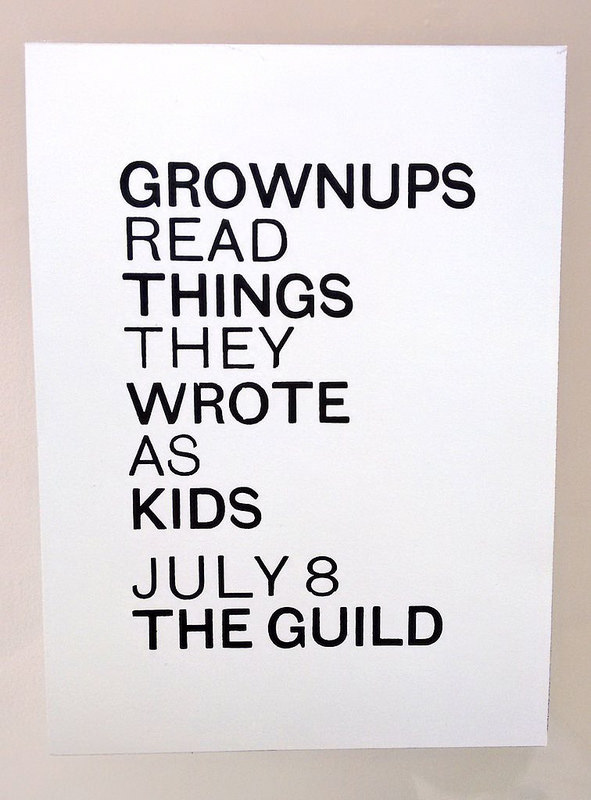
Writing my “10 years after Reboot” post yesterday afforded me a good opportunity to discover how much of the web gets broken after a decade of being left fallow. Here’s what I learned:
- While this weblog has been humming along since 1999, during the conversion from a homebrew blogging system to Drupal in 2009 I didn’t migrate the “enclosures” field I had in the old system, which meant that the audio attachments to posts like this were missing. Fortunately the filesystem they were saved to is still under my control, so I tracked them all down and moved them into Soundcloud and updated the posts. As there are others posts that are similarly-affected, I should really write a script to do a wholesale migration of attachments.
- While I’ve been posting photos to Flickr since that same month, June 2005, that I went to Reboot for the first time, it wasn’t until after I returned from Europe that I started in earnest. Before then I was using Gallery, running on my own server, and when I shut Gallery off later, I didn’t migrate the photos. And somehow that part of the filesystem went missing in the intervening years. Fortunately, deep inside the iPhoto library on my MacBook Air I found the 309 photos I took from June 7 to 13, 2005 with my Canon Powershot S100, and I uploaded them to Flickr for posterity.
- The Reboot website got rebuilt for every succeeding conference, while there’s an “archive” page for Reboot 7, there’s no other trace of that year’s conference on the contemporary site. Fortunately, by following a pointer to the URL of the main Reboot 7 page on Jason Calacanis’s website, I was able to find an October 2005 snapshot at the Internet Archive. Alas almost all of the links on that snapshot are broken. Perhaps another archive exists elsewhere?
- A good example of why putting digital assets inside The Internet Archive is a good idea is that audio recordings of many of the Reboot 7 session are still there: here and here.
- YouTube went online, in beta, only a few months earlier, and the notion of “web video” at the time was almost completely out of the realm of the possible for regular everyday people. But there is an archive of the chat with Doug Engelbart in The Internet Archive. Which is a fantastic artifact and something everyone should watch. (There’s an audio-only version as well).
- Because I started using Plazes during the conference, I have a much more detailed log of my comings and goings over the week I was in Copenhagen than I would have had otherwise.
The greatest asset to my archival research was that time of my life, the spring and summer of 2005, being the high-point of my blogging volume: I wrote 850 posts that year, and was experimenting with with personal podcasting (after recording the first episode of Live from the Formosa Tea House the September before). I was also relatively disciplined with categorizing the posts I wrote here, so I found a rich Reboot7 tag when I went looking yesterday.
In retrospect I wish I’d taken more photographs of people rather than of Danish buildings. I wish I’d kept up my early-trip habit of reflection-through-podcasting, as I would like to hear myself ruminating on the conference after it happened in the same style as I did before. But, when all is said and done, there’s was a healthy enough collection of writing, audio, video and photographs to recall enough of the details of the event to memorialize it.
Ten years ago today, on June 7, 2005, almost exactly at the time I’m writing this post, I boarded an Air Canada flight to Copenhagen, via Montreal and London.
I was off to attend my first Reboot conference.
I’d first learned about Reboot through Ben Hammersley: a video of his talk at Reboot 6 in 2003 prompted me to send him an email in the summer of 2003 asking him to come and speak at our nascent Zap Your PRAM conference here on Prince Edward Island. To my surprise, he agreed. And we built a conference around him. And then, for complex reasons related here, he had to pull out. But we went ahead with the conference anyway, and it was a rousing success.
A couple of years later, I reasoned that, given that Reboot had been the spark that inspired Zap Your PRAM, I should visit the “mothership.”

The stars aligned to make this happen when, on June 2, 2015 Air Canada announced a no-advance-purchase-required seat sale. I booked flights ($1273 return), registered for the conference, and found a hotel. With 5 days to spare. I sent an email to conference organizer Thomas Madsen-Mygdal letting him know that, after earlier sending a “sorry, I can’t come” email, my story had changed:
This morning I opened my morning paper to find that Air Canada started a seat sale, with headline “Fly to Europe on a whim…” I took this as a sign. I’ve made room in my calendar, and rearranged some finances, and I’m coming to reboot.
I’ve registered on the reboot website, and sent payment in by Paypal.
And, on June 7, 2005, I headed to Copenhagen.
During my stopover in Montreal at Dorval Airport, I recorded a strangely-detailed podcast from the airport parking garage.
The next day, June 8, after flying overnight and transiting at Heathrow, upon my arrival in the CABINN Hotel I recorded another podcast.
And then, later that night, after several adventures involving my hotel room door not locking properly, I recorded yet another podcast, on that topic.
Although they were strangely-detailed, I’m glad I recorded those podcasts, as they are a pleasant little glimpse at younger-me through an audio time machine; I ruminated about this at the time.
By the morning of June 9, I was rested and fed and almost ready for Reboot to start.
I went out and about by bicycle for the day, recorded another podcast, where I reflected on my Copenhagen setup (iBook, Griffin iMic), on bicycling on the free Copenhagen bicycles, and on my visit to the Danish Architecture Centre.
After that full day of rambling around Copenhagen, I found my way to the pre-conference meetup at a bar downtown; at that event I met Jyri Engeström (memorialized in this photo) and then, a while later, Olle Jonsoon (memorialized in a story we both have versions of). One of the things Olle and I talked about that night was podcasting, and this prompted Olle to record one of his own, speculating on what was to come.
Reboot-proper started early the next morning, June 10, at Keddelhallen, and I recorded a little atmospheric sound from the front yard and then, a few moments later, some of the sounds from inside the main hall just before things got started.
And then Reboot began.
I learned. I ate. I met people.
Among those I met were Felix Petersen and Stefan Kellner, who presented (audio) about this thing they called Plazes, at the time a spare-time-hack, something I’d signed up for the September before and then promptly ignored. I re-installed Plazes on my iBook that night, and so my second Plazes “checkin” came on June 10 at 7:53 p.m. at Keddelhallen (something I know because I preserved my complete Plazes archive from checkin number one onward).
Last on the program on that first day was a showing of The Mother of All Demos (I captured a little audio here).
And then I came back the next day for Day 2, on June 11.
For that second day I opted to leave my iBook at the hotel and to use my Moleskine to “blog on paper,” which I described here and the results of which are here.
That night, en route to the post-conference supper, I met Mark Wubben and Anne van Kesteren – at the time young high school students. As it turns out, Mark was an enthusiastic listener of my friend Steven’s podcast.
That supper was, as it turns out, a big step for me in my rage against the shyness: I met a great collection of new people, simply by deciding that it would be a good idea.
That night, after the supper and the after-party, back at the CABINN I fired up Plazes again, and this gave rise to the Plazes-mediated meeting of Ton Zijlstra and Martin Röll.
The next day, June 12, I had another unexpectedly interesting supper, and then, on June 13, a walk in the countryside followed by supper in Sweden.
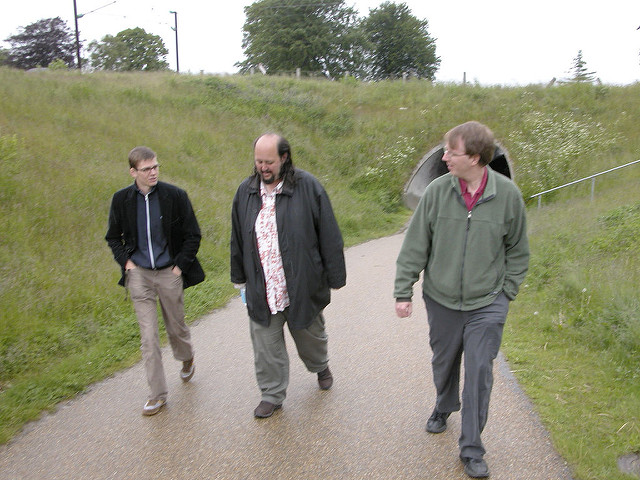
On June 14, I flew back to Prince Edward Island, via Frankfurt and Montreal. Exhausted but happy and very, very changed.
So many of the people I met at that first of the Reboots I attended are friends to this day; it seems like impossibly long ago that I met them all, but the intervening decade has been all the more interesting because of them.
I went back to Reboot in 2006, 2007, 2008, and 2009 (that last year with Catherine).
And then, after five consecutive spring trips to Copenhagen, Reboot came to an end (or, perhaps, a multi-year hiatus?).
Dan Misener is bringing Grownups Read Things They Wrote as Kids to The Guild in Charlottetown on July 8, 2015.
Dan is one of my favourite broadcasters – indeed, one of my favourite people – and the evening promises to be rollicking good fun.
Last week the Canadian Cartographic Association held its annual meeting here in Charlottetown. By way of a delightful cartographic coincidence, I made the acquaintance of the program chair, Roger Wheate, from the University of Northern British Columbia, and over the weekend I got a chance to spend some time out and about with Roger.
This morning, after he returned to Prince George, Roger sent me an intriguing photo, wondering whether I knew what the symbol represented:
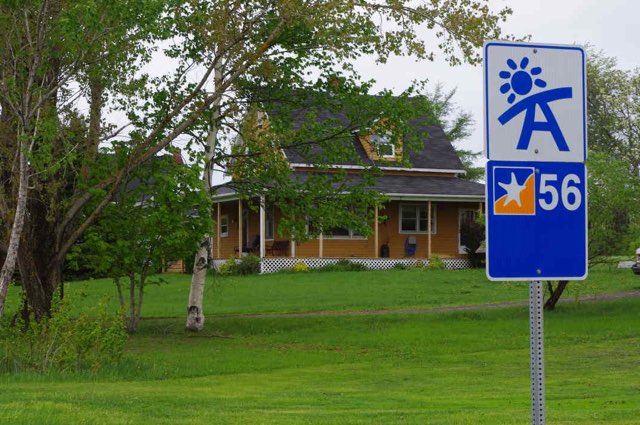
I knew enough to know that the starfish represented the Points East Coastal Drive and that the “56” represented point-of-interest № 56, the Forest Hills Multi-Use Trail.
But what of the “sunshine over upper case A with an line over top of it” symbol?
No idea.
I searched online in vain.
I looked in the Prince Edward Island Visitors Guide for clues.
I phoned 1-800-565-7421, but the friendly agent there had no idea.
As a last resort, I sought out Hubert MacIsaac, Compliance Signage Officer with the province’s tourism department. Hubert, it turns out, is one of the friendliest public servants you’ll ever meet.
And after I emailed him Roger’s photo he quickly got back to me with this helpful signage key:
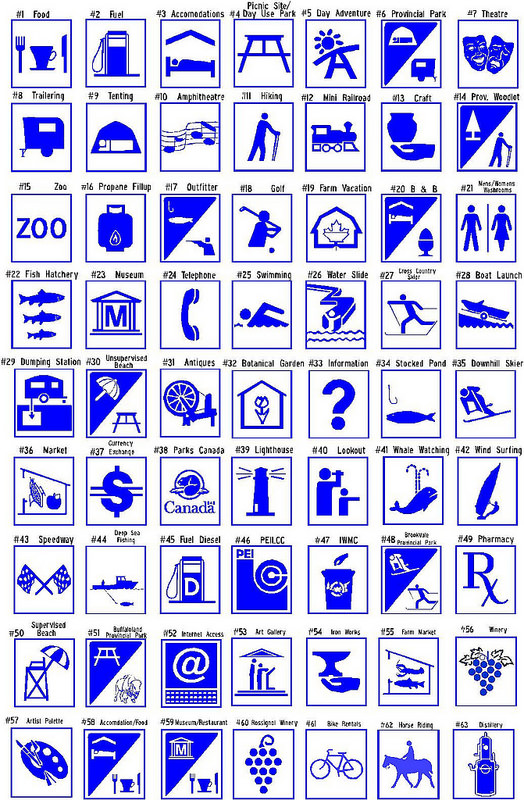
It turns out that Roger had encountered the symbol for “Day Adventure,” the symbolic representation of which confounds me: is it a happy picnic table person enjoying the sun, having an adventure in daylight?
As near as I can tell, using Google Image Search as my guide, this symbol is unique to Prince Edward Island – perhaps unique to eastern Prince Edward Island.
And it is not alone in its mysterious quality.
Referencing the chart above, one wonders why the symbol for “Farm Market” (№ 55) is of a lobster and a fish trapped inside a cabin.
Or why № 32, Botanical Garden, presumably an outdoor attraction, is represented by a flower inside a house.
Would tourists from away, in search of a bottle of slivovice, know that the symbol of the stylized “PEILCC” (№ 46) means “liquor store”?
Are their really that many “Iron Works” (№ 54) on the Island that a symbol needs to be dedicated to them? And can you really hold an anvil in your hand like that?
And wouldn’t symbol № 64, “Distillery,” be more appropriate for symbolizing time travel?
Symbols are useful when they transcend language and allow for quicker communication than words allow; if Roger, an experienced cartographic expert, couldn’t deduce the meaning, then perhaps it’s time for a change?
On June 19, 2014 – almost a year ago – we were driving from Düsseldorf, Germany to Enschede, Netherlands as part of our early summer trip to Europe.
We got lost – or perhaps “misdirected” – and ended up going much too far west for our own good, the victim of a navigation system based on an Android phone with as-then-non-working data plan.
But the misdirection caused us to have a fortuitous brush with history as our corrective route east took us through the outskirts of Deventer:
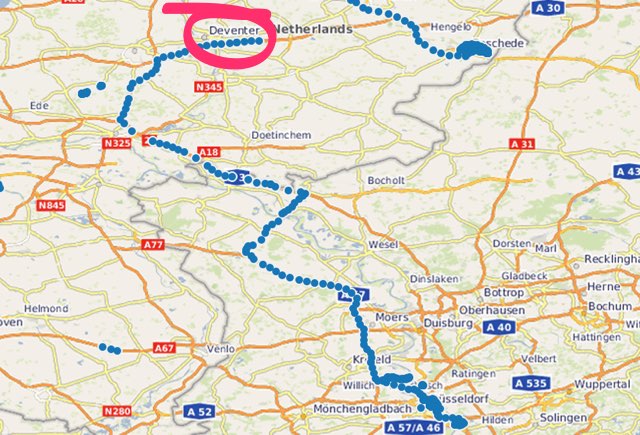
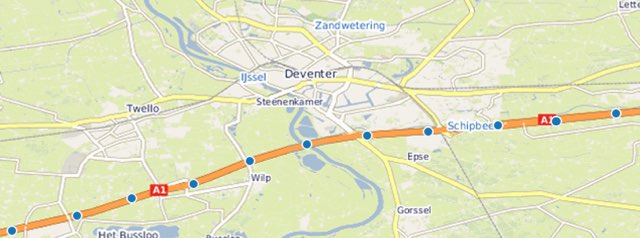
Deventer, as Samuel Holland acolytes will know, was the birthplace of Samuel Holland in 1728. Holland went on to conduct the first modern survey of Prince Edward Island in 1765, an event that’s being commemorated here on its 250th anniversary.
At the time, as we were rushing toward Enschede, we had no idea of this, and it was only in retrospect, while reading Holland’s biographical notes this year, that I thought to myself “hey, I’ve been there before, haven’t I?”
If only we’d known, we could have popped into town and taken a look around.
I’ve launched a new “early intervention program” to help combat a perpetual social problem: someone new starts working here at The Guild and I never get introduced to them.
And then weeks pass, and I see them often, without really knowing who they are.
And then it become too late to introduce myself to them because, well, we’ve said hello to each other innumerable times, and to admit that I don’t know who they are would be embarrassing.
So today, upon seeing a new box office staffer in place behind the desk, I took action.
“You’re new!”, I said.
“I’m Olivia,” she said.
“I’m Peter,” I replied.
We shook hands.
So now I know who Olivia is.
Early intervention FTW.
 Last week while visiting Saskatoon, our friends took us out to Calories, a restaurant on Broadway. In the back, en route to the washrooms, I found a Bitcoin ATM, which is something I’d never encountered before.
Last week while visiting Saskatoon, our friends took us out to Calories, a restaurant on Broadway. In the back, en route to the washrooms, I found a Bitcoin ATM, which is something I’d never encountered before.
Mindful that the opportunity might not come up again soon, I inserted $20 CDN, and out popped a “Temporary Bitcoin Wallet,” a paper chit with a public key and a private key that represented my $20 turned into bitcoins.
Today I managed to figure out, after considerable thrashing around, how to transfer this paper wallet into a Blockchain.info digital wallet.
And so, in theory, I now have about $18.00 of bitcoins ready to spend.
If you are feeling generous, and want to show me what it’s like to receive bitcoins from someone else, my Bitcoin Address is:
19RjGRsPMyv7X67F2amaKpiVyPbSJdUm46
or, in QR code form:
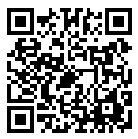
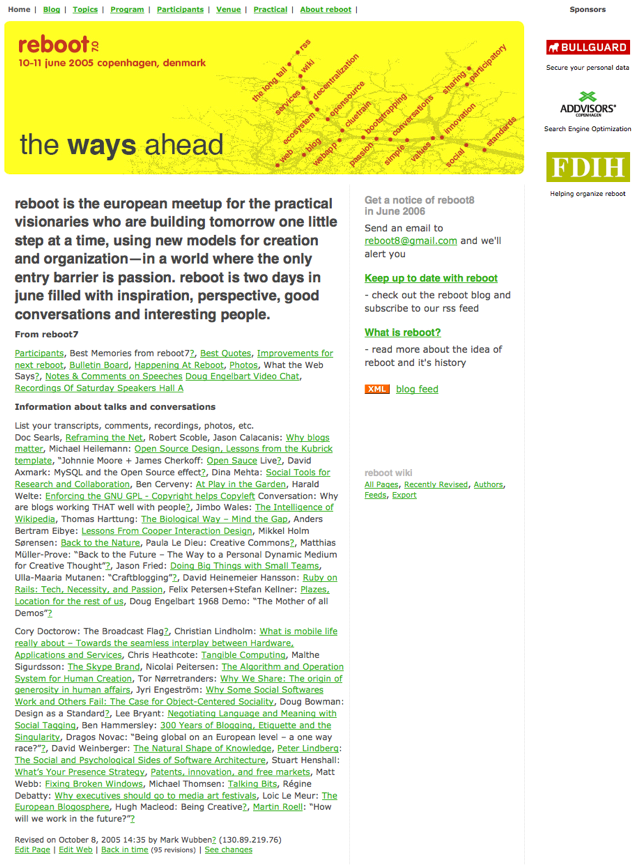
 I am
I am